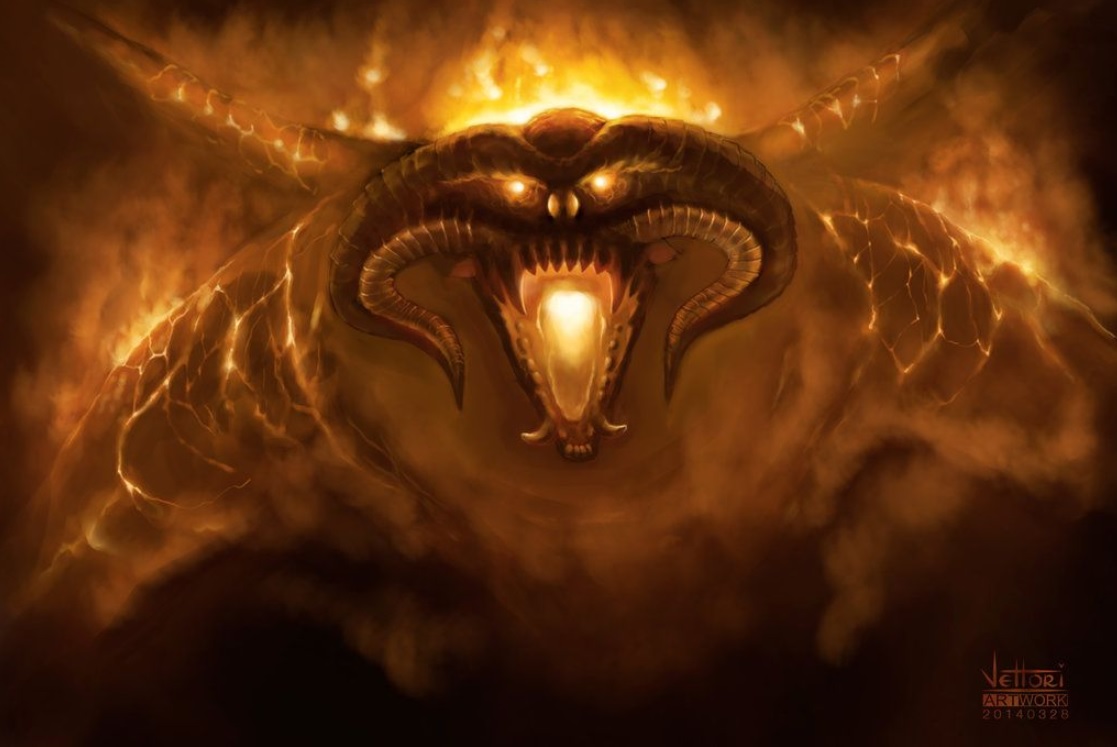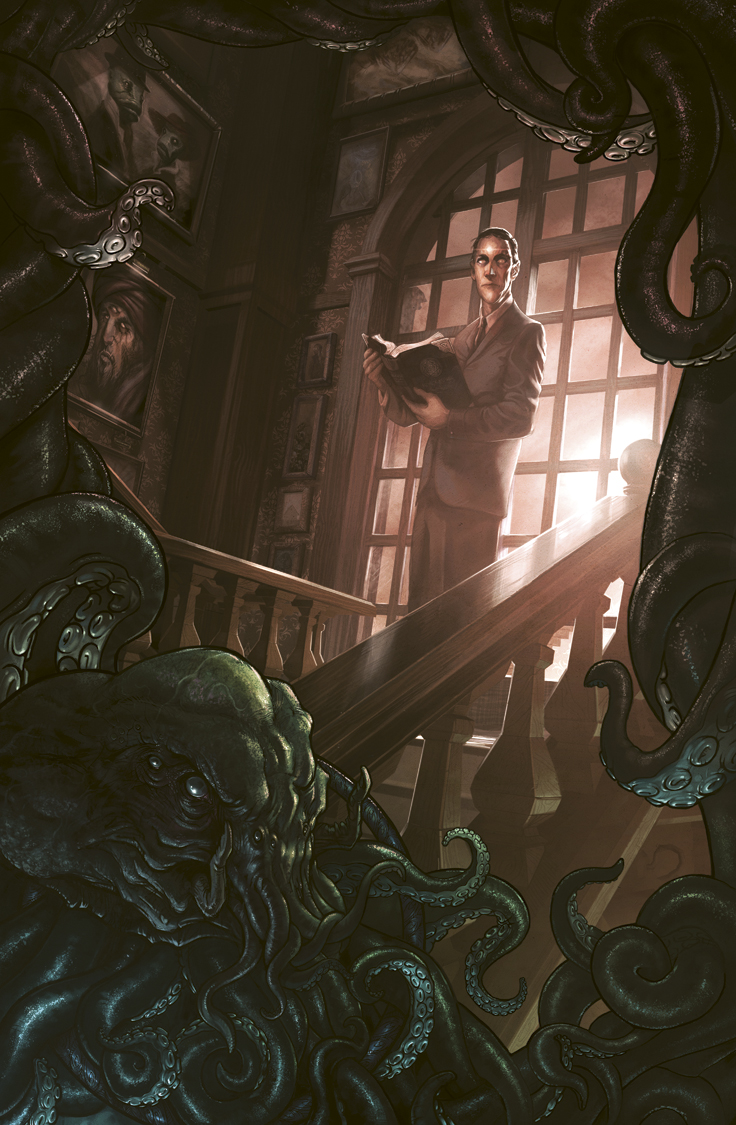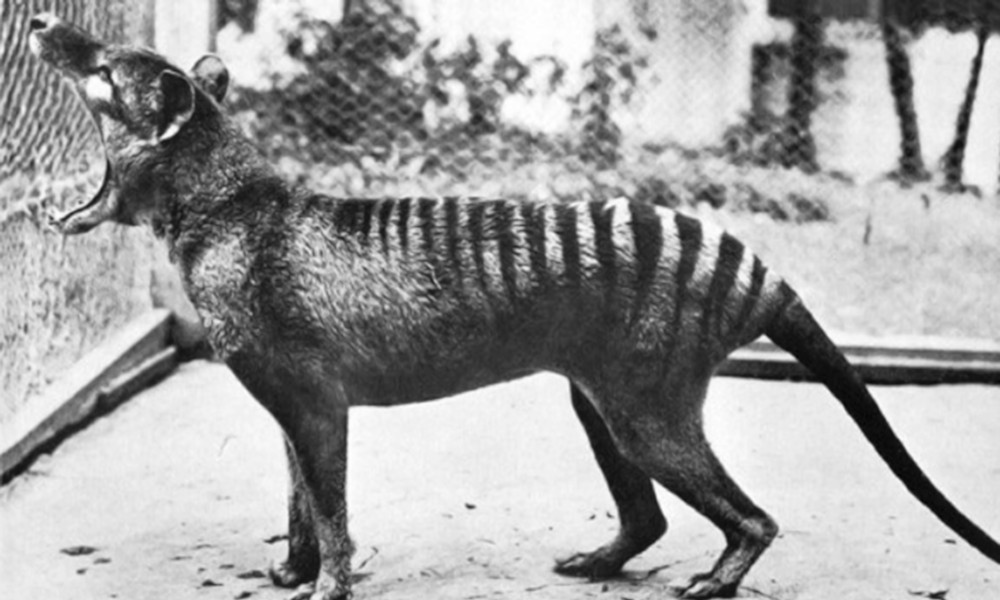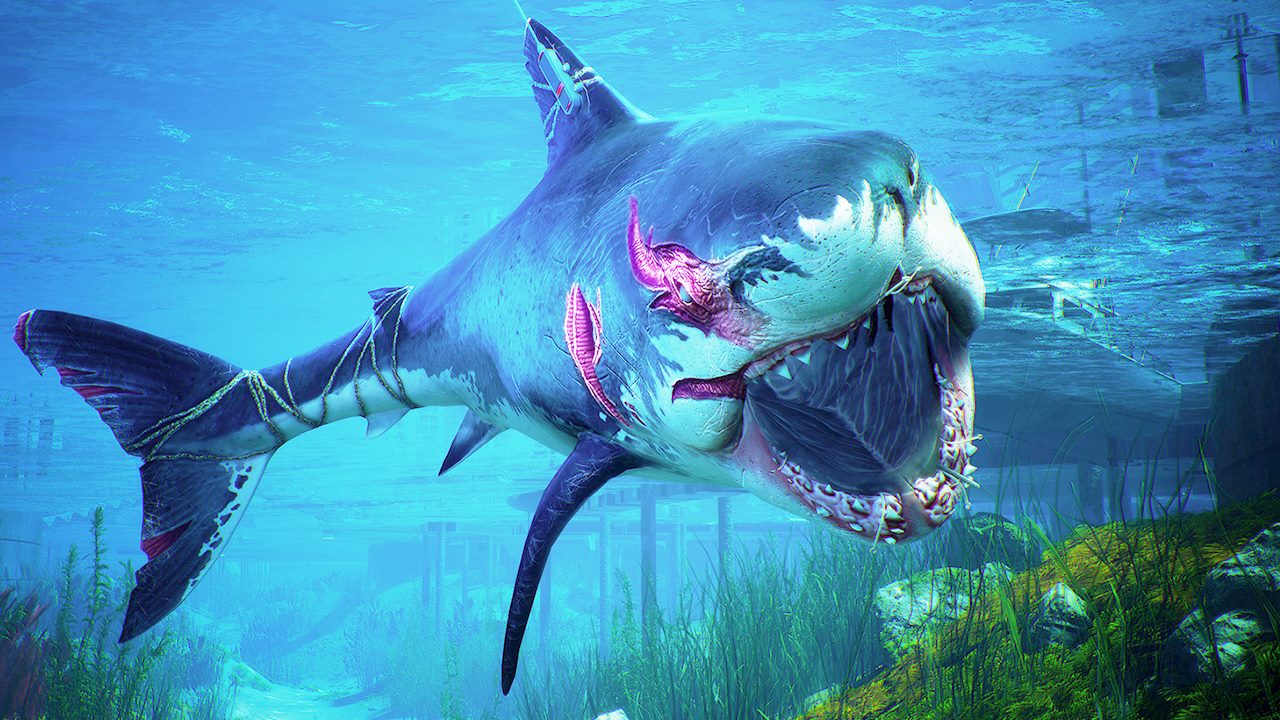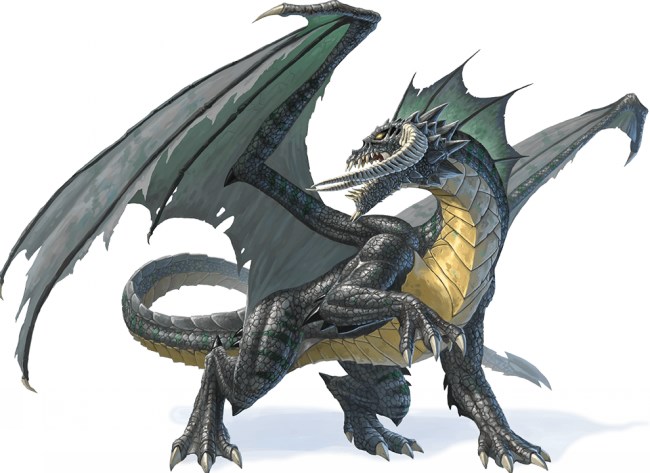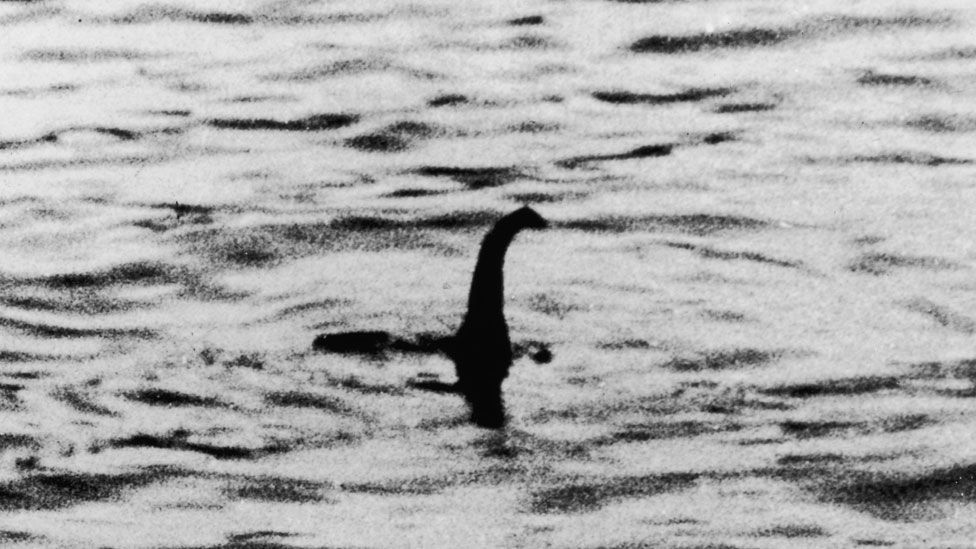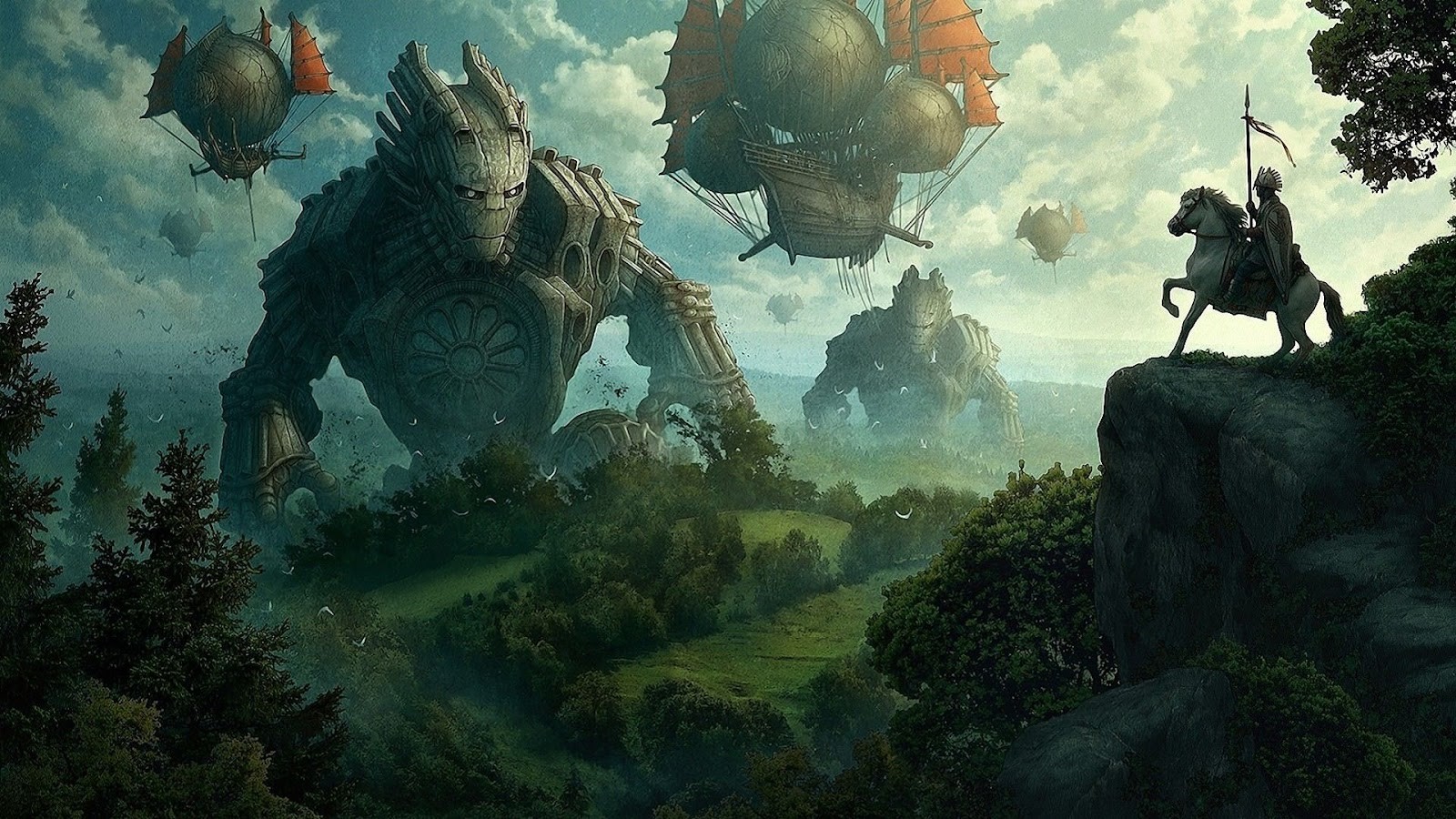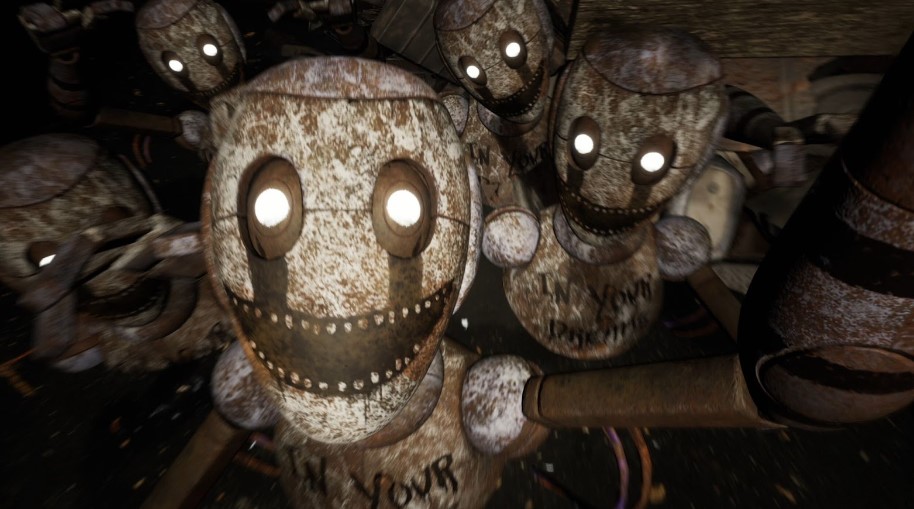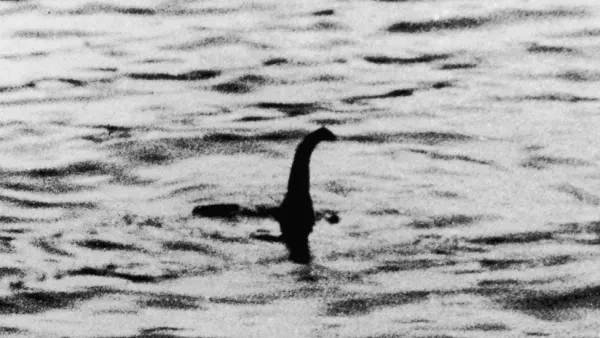
Stories of unusual beings emerging from the sea, flying through the air, or walking among us have accompanied humanity from the dawn of time.. From the kraken that terrorized sailors in the middle ages to stories of encounters with giant ape-like humanoids in the worlds most secluded forests. Our fascination with these creatures have and always will be insatiable.
You’d think that the belief of these creatures even existing would have died out already with the advent of technology where we can see high quality photos of the planet Pluto to the literal depths of the oceans being explored.
But maybe not everything has been found yet.
Year after year we still keep finding new species of animals. The Amazon rainforest alone yields the discoveries of new animals every time an expedition into its depths are conducted. The world's oceans alone have only been charted and discovered a measly 5 percent. 5 PERCENT. And the whole planet is covered in 70 percent of it. Just imagine what kinds of creatures, or monsters, the depths of oceans of the world hold in it.
Today we’re counting down the top 25 of these mythological creatures, called cryptids, from the least to the most scary.
25. Ningen

An artistic representation of a ningen. That is as creepy as it looks
Imagine a sub-aquatic whale-like creature walking the ice sheets of the Antarctic as big as 20 to 30 feet in length. Now imagine that creature being human in form with legs, arms, and a complete set of fingers. Pretty unnerving if you ask me. Literally translating to “human” to Japanese, the ningen has been reported to stalk the icy waters of the Antarctic.
Described as being an enormous “blubbery, whale like creature” whose form resembles that of an upright human being, its forms vary with each sighting of the creature even describing it as having a tail resembling that of a mermaid to even tentacles.
The first sighting of the creature dates back to 2012 on a whale research ship off the coast of the antarctic. The passengers of the ship claim to have seen a large blubbery creature surface near their ship. They first thought of it to be a submarine in a testament to the creature's size. But as they got closer to the “submarine”, it vanished underneath the icy waters.
Numerous other sightings of the creature have also been observed. In 2005 on an image captured by Google Earth, a massive white entity was spotted in the waters of the Southern Ocean with a familiar form of what looks like a creature with a massive tail and two spindly arms on its side.
In 2010, a Japanese chemical research company posted on YouTube a video of what appears to be a massive creature with small eyes and a smiling slit-like mouth lying on the ocean floor.
It's bad enough to be scared of the ocean, but to have a creature with the arms of a human smiling back at you while you swim, I'm happy to just stay on the couch from now on.
24. Champ

Champ’s most infamous photo. If it’d turn his head I’d just lose all motor functions
Sandra Mansi was out on vacation with her family in the Lake Champlain area of North America in 1977. While out on the shore of the lake, she sees what appeared to be a giant snake-like head of something poking its head out of the water. She snaps a photo, and the immortalization of the monster of Lake Champlain was born.
Champ, aptly named after the lake it resides in, is reported to be a giant plesiosaur-like monster that has been around since the time of the Iroquois Indians where they reported the existence of giant snakes in the lake, which the Mohawks called Onyare’kowa.
Since then there has been a reported number of 300 plus sightings of the monster. With sightings going as far back as 1609 and as recent as 2018, Champ has endured throughout history but still eludes humanity to this day.
Its earliest true sighting was reported back in 1819 where a certain “Captain Crum” observed a 187 feet-long monster swimming in the lake with “3 teeth, eyes the color of peeled onions, a belt of red around its neck, and a star on its forehead”.
In 1883, Sheriff Nathan H. Mooney sighted a 25-30 feet long monster in the lake. Mooney was reported to be so close to the creature that he could see “round white spots inside its mouth”. Even the famed showman P.T. Barnum was so enamored by the legend of Champ that he set out a bounty for the live capture of the beast.
Scientific proof of Champ’s existence ranges from echolocations detected in the lake, where there are no known dolphins or whales inhabiting it, and strange reptilian-like footprints found on the shores of the lake. Whatever Champ may be, I’m glad he's just in that lake.
23. Loch Ness Monster
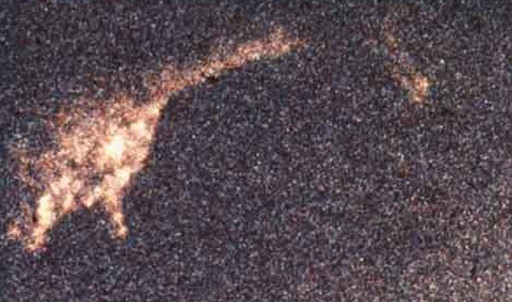
Charles W. Wyckoff’s photo of Nessie which shows the creature's head, neck, and flippers. No surprise why people developed thalassophobia.
One of the poster children of the cryptozoology world, Nessie still swims her way into our collective fear of the unknown of what’s living under the murky depths of Loch Ness since the year 565 AD. Reported as also being a plesiosaur-like monster, I mean just look at the photo attached to this entry, you go and tell me that that doesn't look like a legitimate monster to you.
With her earliest sighting dating back to when St. Columba encountered a “water beast” that had killed a man swimming in the loch the day prior. He then chastised the beast and then described the beast's return to the water as if it was being “pulled with ropes’.
Her most famous sighting which also sparked the modern interest in its existence is the account of George Spicer back in 1933.
His sighting is a strange one as he did not encounter the monster in the water, but rather on dry land. He describes his encounter with the monster when it crossed the road in front of him and his wife's car. The creature was described to be 4 feet high and 25 meters long with a long narrow neck, slightly thicker than an elephant's trunk and as long as the 10-12 feet width of the road.
They saw that the monster carried an animal in its mouth.
His sighting is one of many that still continues on to this day. It's further unsettling that the creature has often been observed emerging from the water to attack animals. Definitely a monstrous creature deserving of its legend.
22. Cadborosaurus Willsi
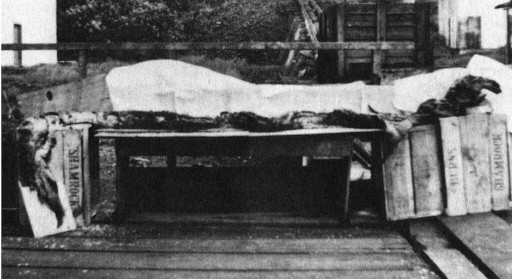
There is no way on Earth you can convince me that that is a fish
Swimming off the coastal waters of British Columbia in Cadboro bay is a 40 to 70 foot long sea serpent with a camel-like head, flippers, and hair on its neck. This is Caddy, whose scientific name is Cadborosaurus Willsi.
The first reported sighting of the monster dates back to 1933 when a lawyer and his wife spotted “a horrible serpent with the head of a camel” swimming near the side of their yacht. In 1934, a rather predatory sighting of the monster was reported.
Two hunters who were trying to capture a duck they had wounded saw the creature who suddenly rose up out of the water, ate the duck and tried to catch some seagulls after. They reported the creature's head alone to be 6 feet long and had saw-like teeth in its mouth.
In 1937 , Caddy’s carcass was purported to have been found. A sperm whale was killed in October of the same year and was brought to the Naden Harbor whaling station in Vancouver. As the contents of the whale’s stomach was being removed, a 20 foot long carcass was found. But it didn't look like a fish or any kind of known animal.
It had a spiny finned tail, a long serpentine body, and the head like a camel, just like how the monster was first described to look like back in its first sighting in 1933. Unfortunately the carcass was lost after its photo was taken, as shown above.
Theories on what the monster could be range from giant oarfish to the prehistoric basilosaurus which somehow survived the dinosaurs extinction 65 million years ago. Whatever Caddy may be, it's hard to deny its existence when a body has already been found.
21. Ogopogo
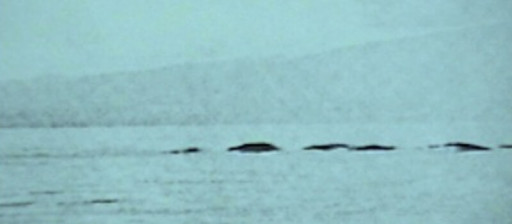
Do these humps belong to Ogopogo? I’m not sure but I am sure I am not brave enough to find out
Another lake serpent that resides in the waters of British Columbia is Ogopogo, which is a palindrome meaning if you spell it backwards it still spells the same, but that strange name carries with it a monster of epic lengths and mystery.
Reported to be a “many humped” variety of lake monster. It’s reported to be between 40 to 50 feet in length, which is as long as the Hollywood sign in California. It is also believed to be a living specimen of the Basilosaurus dinosaur, which has been reported to be the same as the Cadborosaurus monster.
Its most famous sighting happened in 1968, which was captured by Art Folden who was driving near the lake. He noticed something “large and lifelike” moving in the lake that was creating a large wake in its path. Folden filmed the creature that he reported was 300 yards offshore.
Computer analysis of the footage he took on that day was analyzed and concluded that the figure that he captured was solid and three dimensional, implying that there was a moving creature out on the lake.
Other sightings of the creature have also been reported since its 1968 sighting. In 1980, around 50 tourists witnessed a strange creature off a beach for 45 minutes in Kelowna, British Columbia. Larry Thal, who was one of the tourists on the beach filmed a grainy 8mm film for 10 seconds which shows a wriggling mass of an unknown nature out in the water.
In 1992, Paul Demara captured “something” on video while he was out in the water. He reported the anomaly to be traveling just below the surface of the water at a fairly good speed of 8 kilometers per hour.
With sightings of the creature still enduring today with the most recent sighting being reported in 2018, it looks like the monster of Okanagan Lake will not be going anywhere.
20. Fouke Monster

A cast of the creature’s foot print found in a soybean field. That is one huge foot
In the rural town of Fouke, Arkansas lives an ape-like creature that is similar in ways to the legendary bigfoot.Also called the Swamp Stalker and the Boggy Creek Monster, the Fouke Monster was first sighted in the early 1970’s where it attacked a local family. Since then its legend has become a staple of American and Arkansas folklore.
Reports between 1971 to 1974 describe the monster as being a bipedal, ape-like humanoid covered in long dark hair. Estimated to be around 7 feet tall with later reports stating it to be over 10 feet tall, it is estimated to weigh around 300 pounds to even as much as 800 pounds.
It is described to walk in a galloping gait with its arms swinging similar to the motion of a running monkey. Sightings of the creature have also described it to possess a foul smelling odor similar to that of a skunk . It is also said to possess bright red eyes.
The first sighting of the creature was reported in 1971 where it attacked the house of local residents, Bobby and Elizabeth Ford. The creature first made its presence known by reaching through a screen door to grab Elizabeth but was scared off by her husband.
Several gunshots were fired at the monster but no blood was seen near the house. After the incident, they found multiple scratch marks on their front porch and three toed footprints surrounding their house.
Numerous sightings have followed since it first made its presence known in the area. A movie titled The Legend of Boggy Creek was released in 1972, immortalizing the monster.
19. Honey Island Swamp Monster

Frames of an old 8mm film capture of what appears to be the monster striding along the bayou. As far as I know there are no 8 foot tall apes in the swamps.
Described as an 8 foot tail hairy humanoid that resembles an ape weighing in between 400 to 500 pounds, the Honey Island swamp monster stalks the regions of Honey Island Swamp in St. Tammany Parish, Louisiana. In a different iteration of the bigfoot creature, it's said to be covered in a thick coat of matted gray or brown hair and swamp vegetation.
The eyes of the creature have been said to look reptilian while its smell has been described as being similar to that of a skunk.
The first sighting of the creature was documented by a retired air traffic controller named Harlan Ford and his friend Billy Mills who were searching for an abandoned cabin out in the swamps, while Harlan was riding his plane.
They spotted the creature as it reached a clearing, it made eye contact with them until it ran off on two legs into the underbrush of the swamps. Ford described the creature as “something straight out of a horror movie”.
9 years after their first encounter, they went back to the same area to hunt for ducks. They found several dead boars with their throats ripped out. Thinking that it would be impossible for an alligator to do such a killing since the boars were too far out the water and alligators eat their prey and drown them, they theorized it must be the creature they encountered 9 years prior.
Their theory was realized when they spotted tracks of 3 toed webbed footprints near the boars. They went back to the site the next day to make plaster casts of the footprints.
Numerous theories as to what the Honey Island Swamp monster could be have been put out with the most prominent being that an escaped chimpanzee from a train wreck in the 20th century went on to escape in the swamps which then led to it to interbreed with an alligator which led to a population of ape and reptile hybrids.
Though I don't think that that's how genetics work, It nevertheless raises an intriguing conundrum regarding what kind of animal would resemble a cross between an ape and a lizard.
18. Ahool
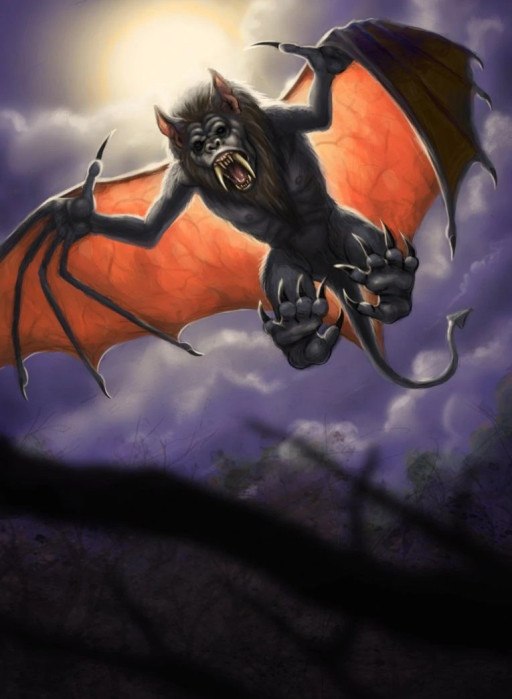
Artistic rendition of an ahool according to eyewitnesses. Imagine this thing swooping down at you in the middle of the night.
Out in the forests of Java, Indonesia lives a creature that looks like the mix of a giant bat and a chimpanzee. The Ahool is described to have large dark eyes, red skinned wings, large claws on its forearms, with a giant wingspan of 18 to 28 feet.
Said to prey on fish that live in the rivers inside the forest, it has occasionally been reported to attack larger prey and in some cases, even humans.
Dr. Ernest Bartels, who is the son of noted ornithologist M.E.G. Bartel was exploring the forests of Java in 1925. As he neared the slopes of a waterfall in Salak Mountain, he saw a giant unknown bat creature fly directly above his head. He didn't have an explanation as to what he saw until 2 years later.
In 1927 Dr. Bartels returned to the forests of Java. At around 11:30 PM as he lay on his bed in his house near the Tijidjenkol River, he heard a sound that was different from any kind of bird he had ever heard. Directly over the roof of his hut, he heard a loud cry that seemed to utter the words “A HOOL” with which the monster was named after.
Thinking of no other creature that can make that type of sound, he was sure that it was the same creature he encountered 2 years ago.
Since those two sightings, the Ahool has gone quiet with no other prominent sightings reported. But I'm sure that the bat monster still lives in the jungles waiting to be found again.
17. Moa
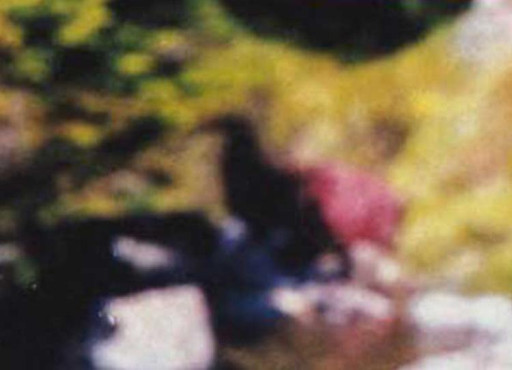
An alleged photo of a fleeing Moa taken by Paddy Freaney. That is one big chicken
The Moa was a giant flightless bird that lived in the country of New Zealand. Similar in appearance to that of an ostrich, they were the largest land mammal that lived in the country growing up to 11 feet in height and weighed around 770 pounds.
They unfortunately were hunted into extinction 700 years ago as humans started to settle into the country. But maybe not all of them died out.
Since its reported extinction, sightings of its survival still exist with sightings being as recent as 2007. In the 1820’s George Pauley claimed to have seen a “20 foot bird” by a lake in the Ototo region of New Zealand. He ran away in fear of the bird.
In 1840, Australian bird painter John Gould sighted a “giant kiwi” with spurred feet on the South Island of New Zealand. His description of the creature's footprints matched the footprints of Moa in the fossil record.
Its most famous sighting was reported in 1993 by former SAS soldier and mountaineer, Paul Freaney. He saw the giant bird in the Craigieburn Range in Arthurs Pass and gave chase as it fled. He managed to snap a photo of the beast which is shown above.
Analysis of the photo at Canterbury University concluded that the subject in the photo was indeed a type of bird. A year later after the photo was taken, a physician found unusual grazing and browsing patterns on the fauna stating that it can only be made by a creature the size of the Moa.
Rediscovery of previously extinct creatures are not uncommon with the discovery of the Coelacanth and the Zanzibar Leopard being taken out of extinction so it would come as no surprise when the giant bird of New Zealand reveals itself once more to humanity.
16. Orang Pendek

A group of bikers encountering a strange orange skinned dwarf in the forests of Indonesia. It reportedly ran away on two legs. And I don't think I need to say this but monkeys don't run away on two legs
Referred to as “hobbits” or the Ebu Gogu by the natives of the island of Sumatra in Indonesia. The Orang Pendek is described to be a small, child-sized bipedal ape covered in reddish or honey colored fur. Its name translates to “short person” in Indonesian.
It walks on two legs, similar to that of similar ape-like cryptids like the bigfoot. Despite its small stature, locals state that it possesses massive strength, enough to uproot small trees and break the vines of the rattan tree.
Orang Pendek are often sighted raiding crops of potatoes and fruits of locals with them having a special fondness of the durian fruit, as told by the locals. The Suku Anak Dalam are groups of nomadic people who have lived throughout the jungles of Jambi and South Sumatra and have told western travelers that they have lived with the Orang Pendek for centuries.
Another group of nomadic people called the Orang Rimba claim that they have also lived with the Orang Pendek but not as peacefully as the Suku Anak Dalam. They describe the creature as traveling in groups of 5 or 6 individuals that hunt prey with small axes and spears and sometimes members of the Orang Rimba indigenous people who travel alone in the forest.
Subsequently, a species of ancient man was found in the island of flores in Indonesia called the homo floresiensis. It is short in stature, about the size of a small child and hunted in groups that used obsidian spears and knives to hunt their prey.
Exactly as how the locals described the creature before the homo floresiensis was discovered by science.
15. Lizard Man of Scape Ore Swamp
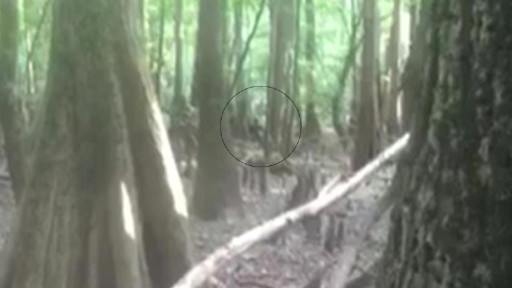
An alleged sighting of the lizard man. No it's not just a mess of pixels
In Lee County, South Carolina there exists a legend of a creature that is both half-man and half-lizard. Known as the Lizard Man of Scape Ore Swamp, it is described as a human sized lizard that walks on two legs. It has been reported to wield claws, sharp teeth like that of a dinosaur, and a reptilian tail.
Theories on what could have led to the creation of this creature range from government experiments to a surviving line of dinosaurs that has survived its extinction event 65 million years ago and evolved alongside apes to be what it is today.
Its sighting and subsequent attack to a local man named Christopher Davis is what made the lizard man famous. In 1988 as he was driving home from work, he stopped by the side of the road of Scape Ore Swamp to change his tire at 2 in the morning. As he finished the task, he heard a strange thumping noise behind him and as he turned around, he saw a lizard-like creature running towards him.
He got in his car to drive away from the creature but as he did the creature jumped on the roof of his car. He swerved side to side to throw off the creature which eventually worked. When he got home, he saw that his side mirror had been badly damaged and the roof of his car bearing scratch marks, but no physical evidence was found.
He describes the lizard man having “...three big fingers, long black nails and green rough skin. It was strong and angry. I looked in my mirror and saw a blur of green running. I could see his toes and then jumped on the roof of my car…”
Following this sighting, local police found 3 toed footprints measuring 14 inches in length. They were advised to not send the casts to the FBI as the footprints were described as “unidentifiable”.
14. Yeti
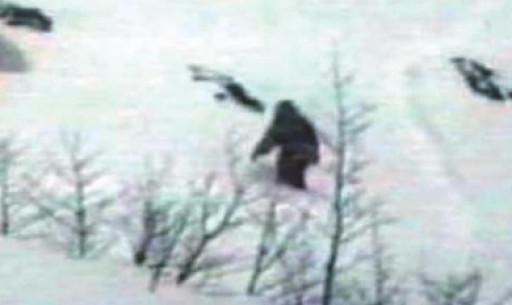
I don't think anyone in their right minds would consider walking out in freezing snow in a monkey suit just for a practical joke. That's how you get shot by hunters.
Sir Edmund Hillary was one of two of the first people to ever climb Mt. Everest along with his sherpa guide, Tenzing Norgay. He will be forever remembered in history bearing these accolades, but in the cryptozoology world, he will be remembered as the man who hunted the yeti.
The yeti is described to be a 8 to 10 feet tall hairy ape man with a furry coat of brown, reddish, or black hair. Contrary to popular belief, the yeti is not white. So far, there have been no reports of a white yeti.
In the numerous expeditions to try and hunt down this elusive creature, there has been only footprint casts, hair samples which have no other comparison in the animal kingdom, and several mysterious bones that have been discovered.
In the 1950’s, Sir Edmund Hillary was fascinated by the “Abominable Snowman” which influenced him to do his search for the creature after he heard of stories of footprints in the mud and snow which indicated the existence of an unknown creature living in Nepal and its surrounding regions.
In 1952, he and George Lowe found hair on a high pass in the mountains which further fueled his fascination for its existence. In 1953 he finally found Yeti footprints in the Barun Khola range. And in 1954, two members of his team also discovered Yeti footprints
Up until his death on January 11, 2008, Sir Edmund Hilary remained a supporter of the possibility of the existence of the Yeti. And since then there have been hundreds of reported sightings of the creature and also trace physical evidence.
From a scalp at the Khumjung monastery in Nepal to a reported hand in the Pangboche monastery and even Yeti feces which when examined yielded a type of parasite that could not be classified, proof that the creature exists doesn't seem to be in short supply. One has to wonder if it's only a matter of time till the creature is found.
13. Thylacine
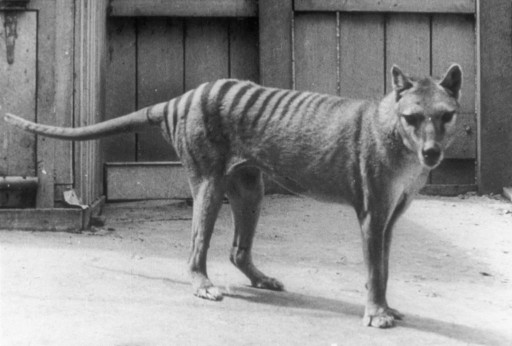
One of the last few thylacines to have survived till its extinction in 1936… or did it?
One of the casualties that humans have brought upon this world is the extinction of the Thylacine. Thylacines, or tasmanian tigers, were marsupials who were the largest predatory marsupials in modern times. They lived in Australia and Tasmania with a population of more than 5000 individuals living in the wild at the time of European settlement in the country.
The last known Thylacine was kept in the Hobart Zoo in Tasmania, Australia on September 7, 1936. He was called Benjamin and died due to neglect by the zookeepers of the zoo. Thylacines were hunted to extinction by farmers as they would normally prey on the livestock that the farmers would keep.
There have been numerous sightings of the marsupials' survival since 1936. In 1938 a thylacine was reportedly shot and photographed. In the 1960’s, Dr. Eric Guiler and David Fleay found footprints and scat that may have belonged to the animal. They also reported to hear the vocalizations that matched the description of the thylacine, and collected eyewitness reports from people who have seen the animal,
Research on the animal and the specimens that are preserved in museums have yielded the possibility of cloning the animal and reintroducing it in the wild. So in our lifetime we may yet see the return of the Tasmanian tiger.
12. Megalania
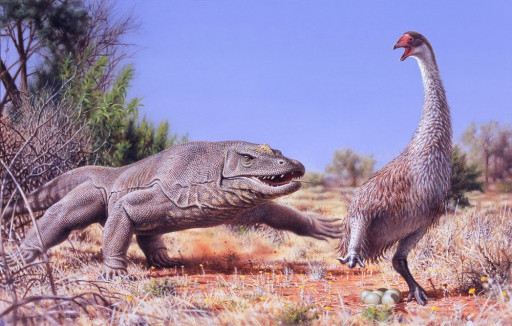
Megalania were prevalent in Australia before its extinction hunting giant birds before its extinction. And you thought the animals in Australia couldnt get more ferocious
The komodo dragon lives in the islands of Indonesia where it is the largest living lizard of modern times. It's strong enough to take down a water buffalo and kill it slowly with its venomous saliva. But during the Pleistocene it had a bigger and more ferocious cousin with the Megalania.
Basically a giant komodo dragon, the Megalania hunted in the continent of Australia before its extinction 23,000 years ago. Recent enough for the earliest aborigines of Australia to encounter the giant reptile.
With cave paintings by the aborigines depicting the Megalania as a fearsome creature who sometimes hunted them down, it shows in its size and strength which it certainly possessed when it was alive, but maybe it still is.
Stories of giant reptiles stalking and terrorizing settlers and towns of Australia thousands of years after its supposed extinction fuel the speculation that the Megalania is still surviving in the wilds of Australia.
The australian town of Euroa tells of a 30 foot lizard who terrorized its denizens and ate whole farms and livestock of the settlement. In 1979, a farmer reported seeing a 20 foot long lizard that escaped into the brush but left behind footprints as it hurried away. Plaster casts were made of the tracks.
Truly a ferocious creature that may still be hunting to this day.
11. Chupacabra
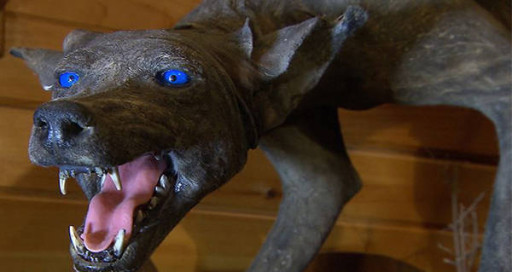
A supposed taxidermied body of a chupacabra that was shot and killed in Texas. It really had those striking blue eyes when they killed it.
A monster that first gained notoriety in South America but has since been spotted worldwide with sightings in the USA, Russia, and even the Philippines, El Chupacabra has earned his reputation as one of the names synonymous in cryptozoology.
First described as an alien-like reptilian biped with spikes sticking out all the way down its back to its more modern iteration as a dog-like monster with rubbery skin and strange growths out on its hindquarters, its modus operandi still runs the same.
In any iteration it's described as, it's always depicted as sucking out its victims blood dry with not a single drop of blood on the ground or on the surrounding area where its prey are found.
Sightings of the creature data back to 1977 where it terrorized a small town in Puerto Rico called Moca. First thought to be the work of a cult as the livestock that it killed were drained of blood by way of small circular incisions on the dead animals necks. Its first visual sighting was established in March of 1995. 8 sheep were found dead with their blood drained through 3 puncture wounds on its chest.
In August of that year, an eyewitness named Madelyne Tolentino claims to have seen the monster in the town of Canóvanas in Puerto Rico where as many as 150 farm animals and pets were killed in a similar fashion as to what claims of chupacabra attacks are described as.
What’s terrifying about these encounters is that there seems to be different varieties or species of this monster that exists in different parts of the world. In South America it's described as a reptilian alien whereas in North America it's more akin to a wild dog more than anything else. Whatever this monster may be, it seems as though its literal thirst for blood will keep on going until it is definitively captured.
10. Flatwoods Monster
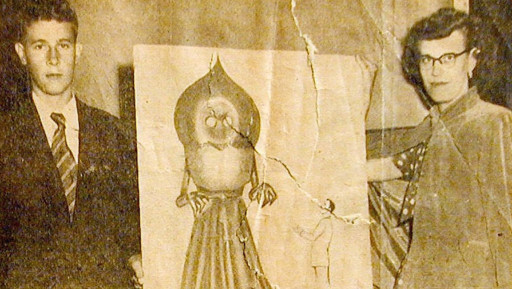
Gene Lemon and Kathleen May hold up the famous sketch of the monster as they described it through their eyewitness testimony.
Intelligent life has to be out there in the vastness of the universe. It's practically impossible that we are the only intelligent life that exists. Although it is also a near impossibility that we may ever come into contact with extraterrestrial life in our lifetime, maybe in this lifetime we won't be the ones to come looking.
Described as being a gigantic entity that is 10 feet tall and 4 feet wide, the Flatwoods monster is widely believed to be extraterrestrial in nature. In its sighting in 1952, it appeared to be wearing a robotic suit rather than something organic.
It wore a cowl that resembled a spade covering its round head. The head is described to bear “portholes” rather than eyes which glowed green. The body of the monster was an armored metal structure lined with thick vertical pipes. The armor is said to be colored black or green.
Its most famous sighting was in 1952 when 3 young boys saw a bright object streak across the sky and eventually land on a property owned by a farmer. The boys then went back to their parents to tell them what they saw and eventually their parents and locals went to try and find what the boys saw.
They eventually came upon a hill that seemed to pulsate like a ball of fire. They eventually saw the monster which hissed at them as it glided towards them. This encounter made the group run away in a frenzy of fear and panic.
This encounter led to a military inquiry which was part of the most famous government investigation into extraterrestrial visitors, Project Blue Book.
9. Mothman
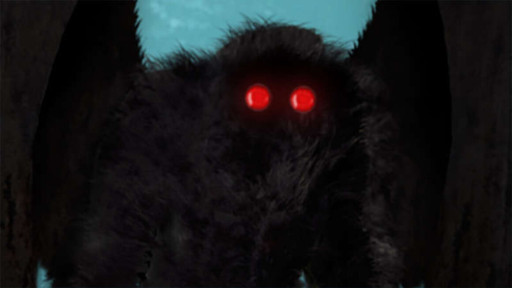
The Mothman is characterized by its huge wingspan and piercing red eyes. Those red eyes won't go away with eye drops.
Believed to be a harbinger of a doom, the Mothman came into the public's eye on a cold night in 1966. The Mothman is described to be a bipedal winged humanoid with red glowing eyes. Despite the name that was given to him, his appearance closely resembles that of a humanoid owl rather than a moth. His color is said to vary between black, gray, or brown.
Reported to be at least 7 feet tall with a wingspan of about 15 feet or even more, he supposedly has the ability to fly at 100 kph with the help of its huge wings. The details of his face and lower body have not been properly described. But one witness who saw the creature's face could only say that the face was “horrible and monstrous” to the point that it caused her nightmares and a nervous breakdown.
Its first reported sighting is credited back to the year of 1966 near Clendenin, West Virginia. Five grave workers who were digging a grave saw what appeared to be a brown winged creature lifting off from the nearby trees. The men who saw the creature stuck to what they saw, which they were adamant was not any kind bird.
Its most famous sighting took place in the same year in the old TNT ordnance area in Point Pleasant, West Virginia. Two young couples decided to visit the area for a night out when they saw two large, glowing, red eyes in the darkness staring at them.
They then saw a 7 foot tall creature walking on two legs with wings folded against its back. As they saw the creature approaching, it suddenly lifted off of the ground and pursued them at speeds of 100 kph more than enough to keep up with their ‘57 Chevy.
Mothman sightings seem to have stopped since then, but the Mothman itself still lives.
8. Mokele-Mbembe
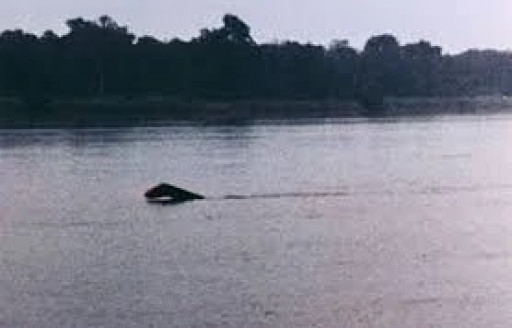
A supposed photo of the monster. Sightings of the creature are said to be a submerged elephant but in this case, where's the elephant?
The Congo river basin is an ecosystem that holds many secrets. Second only to the Amazon in size, it holds as many species of animals as its bigger counterpart. Some of these creatures may be animals we thought were extinct.
The Mokele-Mbembe, which in the Lingalan language translates to “one who stops the flow of rivers”, is a giant monster that closely resembles that of a sauropod who wandered the Earth at the same time as the dinosaurs. There have been many sightings of the creature in the countries of Congo and in Cameroon.
Described to have a body similar to that of a hippopotamus or an elephant. Its length is reported to be in between 5 to 10 meters. The length of the neck is reported to be about 1 to 3 meters with its tail being about the same length.
Sightings of the creature in Cameroon however have reported the animal to be about 75 feet in length with a frill on the back of its head that resembles that on the head of a rooster. Its skin color is predominantly reddish-brown that changes from gray to brown depending on sightings.
Footprints were found in the forest that do not resemble any kind of known animal. It left a deep impression on the ground where it stepped with a three clawed foot. The tracks measured between 30 to 90 centimeters in diameter while the distance between the tracks measured 2.1 to 2.4 meters.
The Mokele-Mbembe is said to create no noise as it moves through the forest and its meat is poisonous as there have been reports of the local pygmies of the Congo allegedly killing one of the creatures which they feasted on. Everyone who ate the meat of the creature eventually died due to poisoning.
The proposition that such an animal still exists up till today makes you think about the possibility that it may not be the only living dinosaur that still exists.
7. Thunderbird
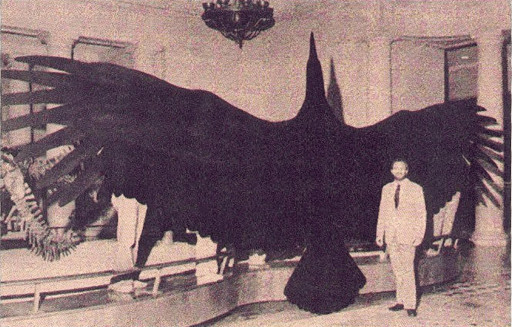
Scarecrows will definitely not work on this one
Said to create thunder with a flap of its wings, the thunderbird has stayed with American folklore and legend since the time of antiquity. Described as being a giant bird that, in native american mythology, can carry away whales back to their nests for eating.
When the pioneers started moving into America, they reported seeing large birds that flew overhead.
Sightings of this creature have been reported with attacks even happening to unsuspecting individuals.. On July 25, 1977, a 10 year old boy named Marlon Lowes was playing outside their home in Lawnsdale, Illinois when he was suddenly picked up by two large birds, which even took him as far as 30 feet away before the boys mother, Ruth Lowe, chased the birds away and recovered her son.
Several eyewitnesses testified to this attack stating what they saw during the attack. The birds were described as having a white ring around their necks, a 4 and a half foot black body with each wing being 4 feet long, a hooked bill, three front claws and one back claw.
One other famous sighting happened in 1890 when two cowboys shot and killed a giant flying creature. This creature however was described to have no feathers and possessed a head similar to that of an alligator. This report seems to suggest that what they shot down was a still living Pterodactyl that has somehow survived to modern times.
Regarded both as a flesh and blood creature and as a supernatural entity by the native americans, thunderbird existence serves as a terrifying unknown of what flies above our heads.
6. Bloop

A spectrogram of the Bloop that is still unexplained until today
Thalassophobia is the fear of large bodies of water like oceans, the sea, and lakes. It's not necessarily the water that scares people but more so of what’s hiding underneath that is truly terrifying. Giant underwater creatures are one thing, but actually hearing the sounds that these creatures make are a whole different ballpark.
The bloop was a powerful, ultra-low frequency sound of unknown origin that was detected by NOAA or the National Ocean and Atmospheric Administration in 1997 that was caught in the South Pacific.
The sound that the bloop produced was so loud that it was detected by oceanic sensors 4800 kilometers apart. It is believed to be the vocalization of an undiscovered marine mammal that would mammoth the size of the blue whale.
The patterns of the sound of the bloop has been reported to be similar in pattern with an animal. In comparison with large aquatic mammals like the blue whale, the animal that would have been able to make a sound as loud as the bloop would be about 250 meters in length.
There have been theories that it may not be an animal but an ice quake or the rubbing and ridging of ice floes between each other. Some state it may also be an underwater volcano erupting.
Whatever the origin of the bloop is, it's still terrifying to think that a creature that is 5 times bigger than the biggest mammal on Earth resides in the deepest depths of the ocean
5. Zuiyo Maru Creature

The carcass that was picked up by the fish trawler, Zuiyo Maru, resembles that of a plesiosaur -like creature.
The japanese fishing trawler named the Zuiyo Maru was sailing east off the coast of Christchurch, New Zealand when they caught a strange and unknown creature in their trawl. Upon seeing what they caught, the crew were convinced that it was an unknown animal.
But despite the unknown nature of the carcass that they found and the possible groundbreaking discovery that they found, the crew decided to dump the carcass back into the ocean as they feared it would cause the spoilage of the fish that was already on board but not without taking photos of the carcass and saving some pieces of it for further examination.
The crew of the ship named the carcass as “Nessie”.
When news got out of the discovery of the carcass, a “plesiosaur craze” happened in Japan with the shipping company ordered all of its boats to try and relocate the carcass but led to no rediscoveries of the body.
The carcass was already decomposing when it was found and reportedly weighed 1800 kilograms and was about 10 meters long. According to the crew, the creature had a 1.5 meter long neck, four large reddish fins, and a tail about 2.0 meters long. It did not have a dorsal fin and no internal organs remained, but flesh and fat were still somewhat intact.
4. Giant Congo Snake
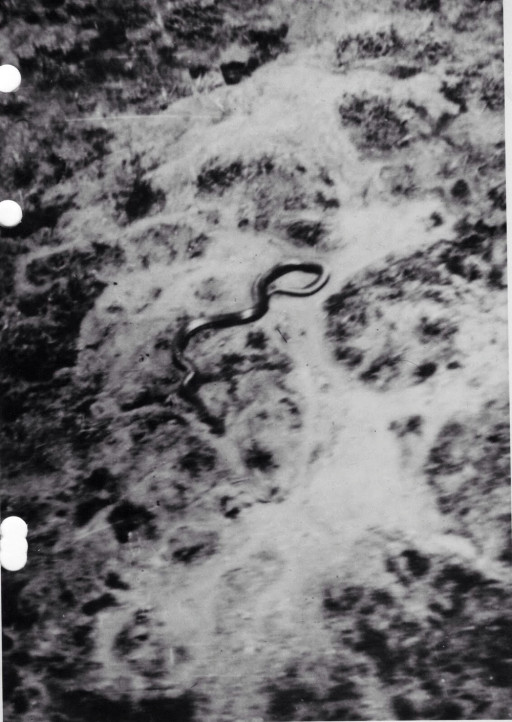
Colonel Remy van Lierde captured the one and only proof of the 50 foot congo snake he found after returning from a mission by helicopter.
In 1959, as air force colonel Remy van Lierde was flying over the congo forest, he reported seeing a giant snake that measured up to 50 feet long. As was the case with the Mokele-Mbembe, the congo is second only in size to the amazon rainforest, and in the depths of its forests hide creatures that have not been discovered yet.
Van Lierde described the snake as having a 2 foot wide by 3 feet long triangular head and with a length of 50 feet. He also described it as having dark green and brown top scales and a whitish colored underside. If his measurements were correct, that would make the snake he spotted as one of the largest snakes to have ever existed.
When he sighted the snake he asked the helicopter pilot to circle back so he could observe the snake more.
The helicopter hovered near the snake and when it did, the snake reared up the first 10 feet of its body which gave him the opportunity to see its underbelly. He believed that the helicopter was within striking distance so he ordered the helicopter to resume its route
The snake that van Lierde saw is believed to be a gigantic African Rock Python or a descendant of the Eocene period snake, Gigantophis.
3. Megalodon
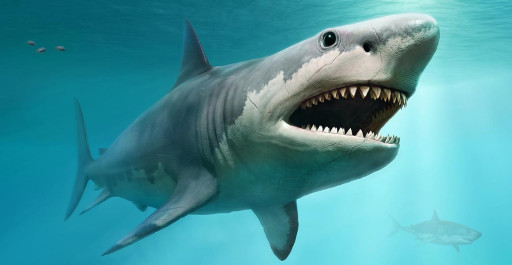
Artistic representation of what a Megalodon would look like in modern times. More reason to not dip a single toe in the ocean.
The megalodon was a gigantic shark that reached lengths of up to 50 feet and was similar to the Great White Shark. They lived 15.9 to 2.6 million years ago during the Cenozoic era. Megalodon translates to “big tooth” in English and rightfully so. The teeth of a Megalodon reached an average 7 inches in length and could swallow an elephant whole in one big bite.
Widely believed to have gone extinct around the same time as the dinosaurs, reports and sightings that persist to this day lead to speculations that the massive shark may still be alive.
In 1918, fishermen off the coast of Australia refused to work after a giant shark supposedly destroyed their gear and crayfish pots. When questioned, they all reported the same sighting, a giant white shark that measured up to 115 meters in length. They were already seasoned fishermen at the time of this encounter so they would have easily distinguished between a whale and shark.
Another sighting happened in the 1960’s when a captain of a 26 meter long fishing boat saw a giant shark swim near their boat. They first thought that what they were seeing was a whale rather than a shark.
Theories on its survival has given the Megalodon a cult following in popular culture with dozens of movies and mockumentaries where it is the main focus of the media it is in. Something about the things we fear intrigues us that makes us want to see more and also see less of what we’re not sure of its existence.
Megalodon carries with it decades of conditioning of us humans that there is always something out there in the waters waiting to be discovered
2. British Big Cats

A wild puma roaming in the English countryside, an area where it is not endemic in.
Invasive species threaten the ecosystem of anything it invades. From bodies of water to savannahs and jungles, they bring with them an imbalance that impacts the local flora and fauna that exists wherever they may reside. A bad example of this kind of animal are the British Big Cats.
Although big cats like panthers and pumas are not animals of an unknown origin, when they are sighted in areas where they are not supposed to be, in this case in the country of England, that's when they become creatures of unknown origin. No one knows exactly where sightings of big cats in the English countryside started or how they came to grab a foothold in the country. Some theories suggest that they are escaped pets that eventually established a breeding population that continue to this day and some theories suggest that they are descendants of ancient big cats that once stalked England but have somehow survived.
Specimens like the Beast of Bodmin Moor, which is reported to be a black panther that stalked Cornwall, England. Another big black cat dubbed as the “Fen Tiger” was recorded in Cambridgeshire and another sighting of a big black cat named “The Beast of Dartmoor” was reportedly seen by a group of 15 people that matched the description of a forest jaguar.
This and hundreds of other sightings of these alien big cats persist as recently as 2021. Bodies of these cats have already been turned up with dozens of photo and video evidence, one has to wonder if these cats should still be labeled as “alien” to the country of England.
1.Bigfoot
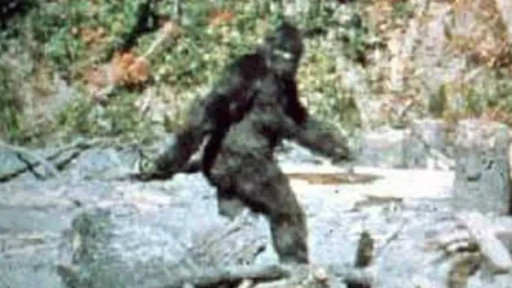
Frame 353 of the famed Patterson-Gimlin film that shows “Patty”, a female bigfoot due to the prominent breasts shown as its walking
The poster child of cryptozoology itself and all mysterious creatures around the world, Bigfoot itself more than deserves its legendary status among all other unknown creatures that may or may not exist in this world.
Described as being a large, muscular, and bipedal humanoid ape covered in black, dark brown, or dark reddish hair. Standing between 6 feet to 15 feet tall. Reports of its appearance have described it as being “man-like” with one report in Oregon claiming that a hunter had the beast in his sights but could not bring himself to shoot it because it “looked more human than animal”.
The strongest evidence for its existence even 55 years after its recording is the Patterson-Gimlin film named after the two filmmakers behind the camera, Roger Patterson and Bob Gimlin. It depicts an unidentifiable animal covered in black fur and walking on two legs in Bluff Creek, Northern California.
Extensive analysis of the film and the subject it depicts have turned out inconclusive, but experts who have taken a look at the film say the same thing, It's not a man in a suit.
They postured that the way the muscles were rippling, the leg and arm proportions that were inconsistent with humans, and the mid tarsal breaks in its foot that are more akin to an ape rather than a human all point to that whatever was walking in the video was definitively, an undiscovered ape.
Creatures like bigfoot, loch ness monster, and the chupacabra all posit the idea that some creatures in this world will always feed our curiosity into what might be hiding in our world.
You May Also Be Interested In:
- Top 15 Creepy unknown creatures caught on tape
- Top 15 Japanese mythology creatures and what they’re famous for
- Top 15 Lovecraftian monsters
- List of Top 25 Cryptids (Ranked Least to Most Scary)
- [Top 15] Most Convincing Pictures of Ghosts of All Time
- The 25 Best Ghost Movies of All Time
- Top 11 Ghost Games You Need To Check Out




